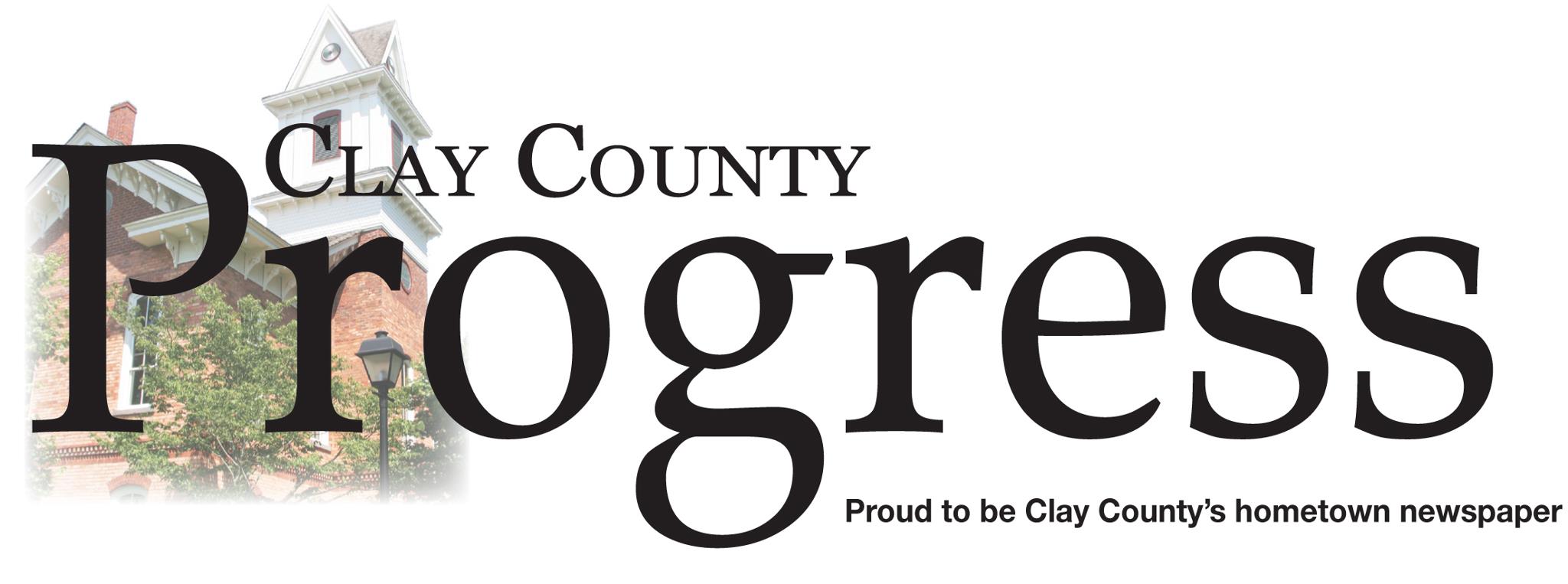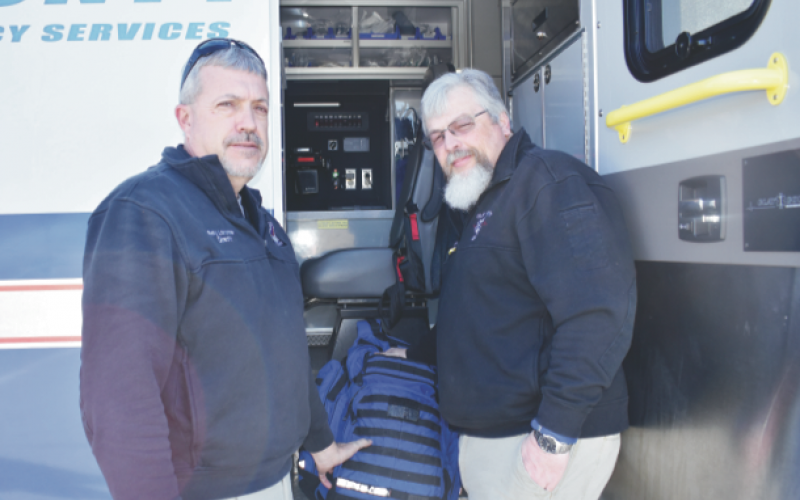Paramedic can assess patients’ medical conditions in their own surroundings
Community paramedicine may sound like an idea of the future, but it has already arrived in Clay County. Nationally known as mo- bile integrated healthcare, Clay County received a $95,000 grant from the Nantahala Health Foundation to implement the program county-wide to benefit all residents.
Clay County’s Director of Emer- gency Medical Services Ricky Lancaster said, “EMS as a whole, has always been reactive, rather than proactive when you call 911. We are trying to be proactive, rather than reactive.”
Paramedic Jeff Ledford shared how it works. “Some people have called 911 multiple times in a year. Many times, the problem causing them to call over and over can be taken care of without emergency services involvement,” he said. “We can trouble-shoot and help fix the issue. Referrals may come from inhouse from our own paramedics, physicians’ offices, DSS, the health department, friends, neighbors or someone else.”
Ledford is a registered nurse and
can sometimes determine what is needed with a home visit. With one client, Ledford determined a specialist referral was needed. With others, medicine reconciliations have alleviated problems occurring because prescription medicine was not being taken correctly. If someone has fallen several times at home, a fall risk assessment may be done which shows the solution may be removing some rugs or extra furniture.
He shared another example. “Imagine a patient with congestive heart failure who is routinely hospitalized,” he said. “We can go in and weigh the patient two to three times a week. If he has gained a couple of pounds, we can call the doctor to see if he needs something to reduce fluid. We have even helped people on hospice be more comfortable.”
Each case is different and the program should decrease the recurrence of 911 calls, as well as emergency room visits.
“Our paramedics are well-trained. This will save money overall,” Lancaster said. “A hospital cannot bill Medicare and some others for the entire amount of a bill if a patient is readmitted within 30
days for the same problem. This should alleviate some of them having to go back because the problem is not solved.”
The idea for a local paramedicine program originated in 2018, when Carie Free, practice administrator of Chatuge Family Practice, had a visit from Maggie Sauer, the director of North Carolina’s Office of Rural Health. “She was here to find out needs our practice and the community might have,” Free explained. One thing Free requested was to start a community paramedic program.
“I explained because our office was in an Accountable Care Organization through Mission Partners in Asheville, we had seen how this program works with local EMS to be an extension of the primary care provider to help keep patients from being readmitted back to the hospitals within 30 days or wasting a trip to the emergency room. Buncombe County had a fabulous model and I knew Clay County residents desperately needed this. I wanted this to be something for all residents regardless of who the medical provider is.”
Free wrote a planning grant and partnered with Buncombe County to model its program. Many agencies were included at monthly meetings to determine the needs of each.
The original program began with Chatuge Family Practice under the 501c3 of Clay Comprehensive Health Services.
Ledford said the county’s new grant will allow a Community Paramedic Referral Coordinator to spend more time following up on needs.
It is also seed money for equipment to facilitate the job.
The program is free for anyone who wants to participate. Another grant to purchase a vehicle has been applied for.
“Once the state budget passes, it will have some Medicaid dollars budgeted in to pay,” Lancaster said. “Medicare will probably have similar changes. Once insurance companies begin to see how this saves money in the long-run, I think they will send some dollars our way. It is beneficial all around.”
Interim County Manager Debbie Mauney agreed. “Our county is excited about implementing a Community Paramedic Program
for the citizens in our county,” she said. “This program will give them access to health care in their own home. We are modeling the program after a Rockingham model that has a mobile integrated care program which includes a community paramedic, a DSS Social Worker and a behavioral health specialist.”
Mauney, who is also Clay County director of Health and Human Services, said programs in other counties have worked.
“Our county operates under a consolidated Health and Human Services, so it makes sense to have an integrated team,” she said. “Rockingham has experienced a 63 percent decrease in EMS calls to the emergency room with those individuals who are utilizing the program.”
Sometimes, the issue is safety in the home and there may even be a need for a smoke alarm, a ramp or something else. The program will refer clients to other agencies for help when it can not be addressed by county staff. “We have referred people to Hinton Center and Matt’s Ministry several times,” Ledford said.
Both Ledford and Lancaster said the col- laboration within the county has helped the program work well. Lancaster said he has never seen the county agencies work together as well as they are now.
Ledford added, “We have been doing this since about 1986. All of the departments from the transportation, the health department, DSS, the senior center and all are working together to make everything happen.”
In addition, they hope to start an EMT training class at Hayesville High School.
“We need to grow more EMTs in our community,” Lancaster said. “Several of us are getting older and we need new people.”
Ledford also explained about the free “Stop the Bleed” training the emergency staff is offering. “Any group can set up this two-hour class to learn how to handle bleeding and other emergencies,” he said. Call 389-1233 for class info or to refer someone for the community paramedicine program.
“When it comes to community, we want to do anything we can,” Lancaster said.

